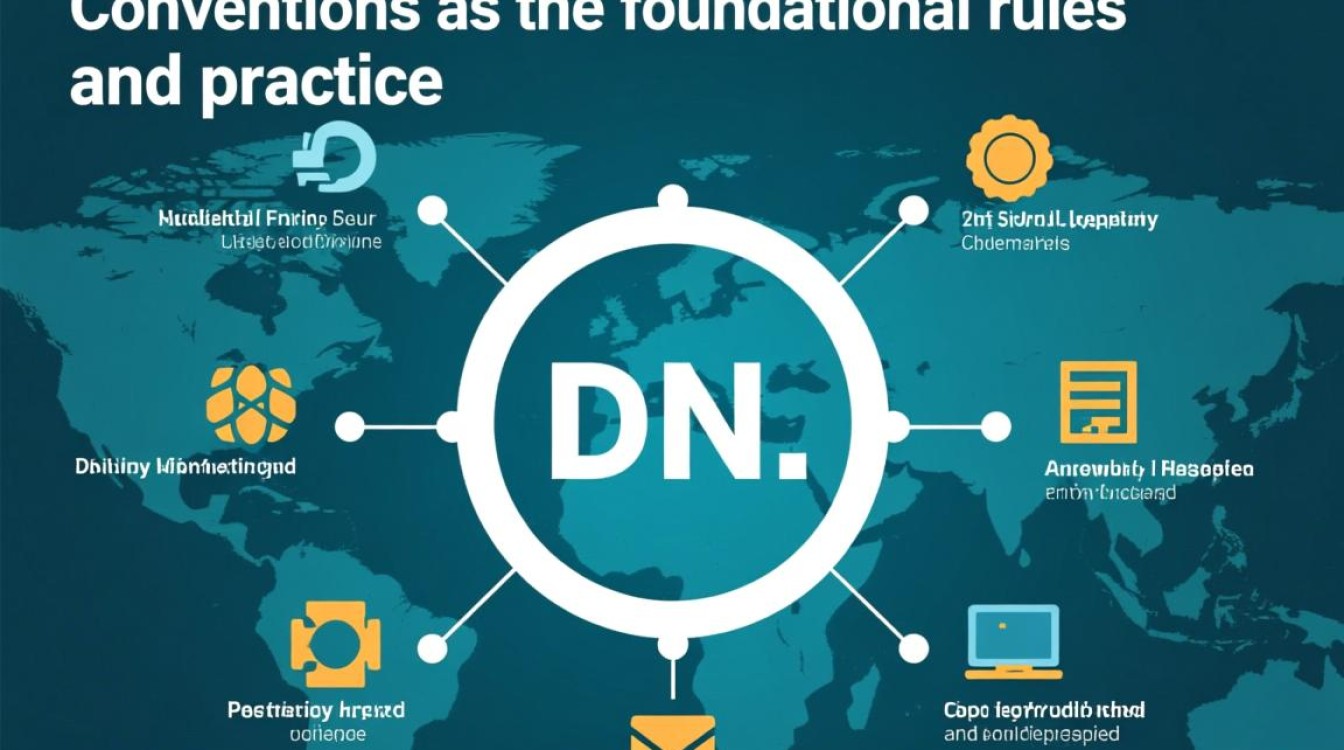DNS conventions serve as the foundational rules and practices that govern the structure, naming, and operation of the Domain Name System (DNS). These conventions ensure that DNS remains a reliable, scalable, and efficient system for translating human-readable domain names into machine-readable IP addresses. Adhering to these conventions is critical for maintaining the integrity of internet communications, as deviations can lead to misconfigurations, service disruptions, or security vulnerabilities. Below, we explore the key aspects of DNS conventions, including naming structures, record types, case sensitivity, and best practices for administrators.

Naming Structures and Hierarchy
The DNS hierarchy follows a tree-like structure, organized into zones starting from the root zone (.) down to top-level domains (TLDs), second-level domains (SLDs), and subdomains. Each level is separated by a dot (.), with labels between dots restricted to 63 characters, and the total domain name length not exceeding 255 characters. For example, in "www.example.com," "com" is the TLD, "example" is the SLD, and "www" is a subdomain. Conventions dictate that domain names should be descriptive, easy to remember, and avoid hyphens at the beginning or end of labels. Additionally, internationalized domain names (IDNs) allow non-ASCII characters, but they are typically converted to punycode (e.g., "xn--example") for compatibility with legacy systems.
DNS Record Types and Their Conventions
DNS records store essential information about a domain, and each type follows specific formatting rules. Common record types include:
- A Records: Map a domain to an IPv4 address (e.g., "example.com IN A 93.184.216.34").
- AAAA Records: Similar to A records but for IPv6 addresses.
- CNAME Records: Alias one domain to another (e.g., "www.example.com IN CNAME example.com").
- MX Records: Specify mail servers for a domain (e.g., "example.com IN MX 10 mail.example.com").
- TXT Records: Store text-based information, often used for verification or SPF records.
- NS Records: Identify authoritative name servers for a zone.
Conventions require that records are concise, accurate, and include a time-to-live (TTL) value to define how long the record should be cached by resolvers.
Case Sensitivity and Label Formatting
DNS names are case-insensitive, meaning "Example.com" and "example.com" are treated identically. However, conventions recommend using lowercase for consistency and readability. Labels within domain names must not start or end with a hyphen and can only contain letters, numbers, or hyphens (e.g., "valid-domain" is acceptable, but "-invalid" or "invalid-" are not). These rules prevent parsing errors and ensure compatibility across DNS implementations.
Administrative Best Practices
Proper DNS administration involves adhering to conventions to avoid common pitfalls. For instance, using version control for zone files ensures changes are tracked and reversible. Regular audits of DNS records help identify outdated or incorrect entries, while implementing DNSSEC (Domain Name System Security Extensions) adds cryptographic authentication to prevent spoofing and cache poisoning. Additionally, wildcard records (e.g., "*.example.com") should be used sparingly, as they can inadvertently expose unintended subdomains.
IPv4 and IPv6 Conventions
With the transition to IPv6, DNS conventions have evolved to accommodate longer addresses. AAAA records are mandatory for IPv6 support, and reverse DNS (PTR records) for IPv6 uses the .ip6.arpa domain. Administrators must ensure that both IPv4 and IPv6 records are configured to maintain dual-stack connectivity, as omitting one can limit accessibility for users on different networks.

Security and Privacy Considerations
DNS conventions also emphasize security and privacy. For example, using encrypted DNS protocols like DNS-over-HTTPS (DoH) or DNS-over-TLS (DoT) protects against eavesdropping. Administrators should avoid hardcoding sensitive data in TXT records and instead use secure channels for zone transfers. Regular updates to DNS software patch vulnerabilities, and rate limiting mitigates DDoS attacks on DNS servers.
Scalability and Performance
To ensure scalability, DNS zones should be split into manageable subdomains, and load balancing can be implemented using multiple A or AAAA records with weighted or round-robin policies. Anycast routing distributes DNS queries geographically, reducing latency and improving resilience. These conventions align with the internet's decentralized nature, ensuring DNS remains fast and reliable even under heavy traffic.
Common Pitfalls to Avoid
Misconfigurations such as missing TTL values, incorrect MX priorities, or overlapping CNAME and A records can disrupt services. For example, a CNAME record cannot coexist with other records for the same name, as this violates DNS standards. Similarly, overly long TTL values can delay updates during outages, while very short TTLs increase DNS query loads. Striking a balance is key to optimal performance.
Conclusion
DNS conventions are the backbone of a functional and secure internet. By following established rules for naming, record management, and security, administrators can ensure their domains are accessible, resilient, and compliant with global standards. As the internet continues to evolve, staying updated on emerging conventions—such as those for DNSSEC and IPv6—will remain essential for maintaining a robust DNS infrastructure.
FAQs

-
What is the maximum length of a domain name under DNS conventions?
A domain name can be up to 255 characters long, including dots. Each label between dots must not exceed 63 characters. For example, "a.b.c.example.com" is valid as long as each segment (e.g., "a," "b," "c") is 63 characters or fewer. -
Can DNS names contain special characters like underscores or spaces?
No, DNS labels can only contain letters (a-z), numbers (0-9), and hyphens (-). Underscores (_) are technically allowed in some contexts (e.g., SRV records), but they are not universally supported. Spaces and other special characters are prohibited and must be encoded or avoided entirely.